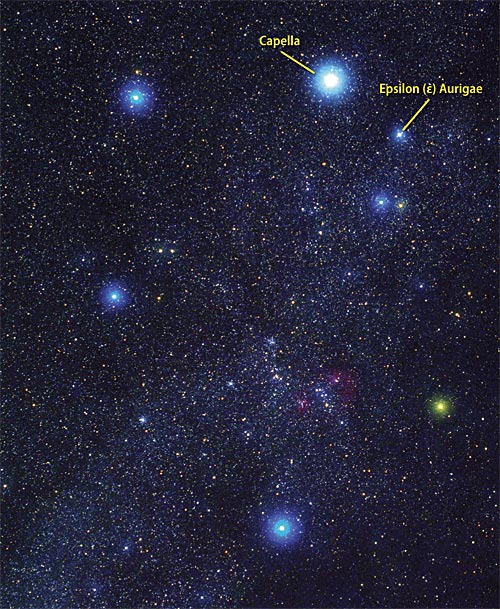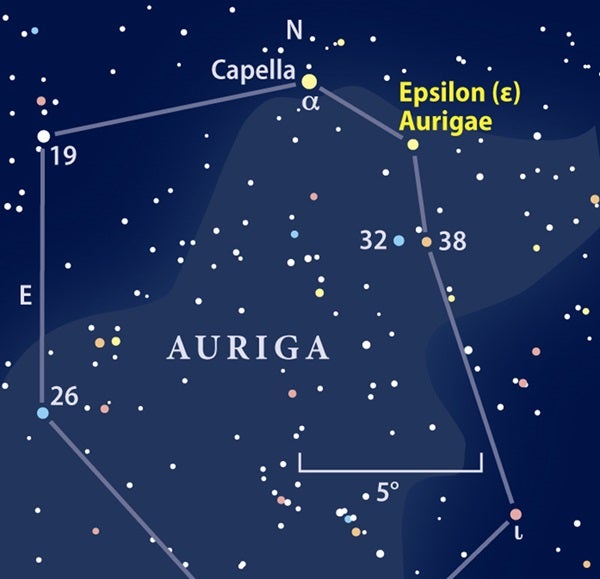Next week marks the return of both a cosmic mystery and a great opportunity for amateur astronomers.
Starting in August, the normally bright star Epsilon (ε) Aurigae in the constellation Auriga the Charioteer will begin to dim. After around 6 months, it’ll stay dim for about a year, then slowly brighten until it regains its usual shine. And, adding more confusion, in the middle of its darkest moment, Epsilon Aurigae will temporarily brighten almost two-tenths of a magnitude. This unusual light show happens every 27.1 years and has been a continual source of amazement to every new generation of stargazers.
Amateur astronomers can make significant contributions to this International Year of Astronomy by closely monitoring Epsilon Aurigae’s varying brightness. Even naked-eye observations will confirm its drop from a magnitude of 3.0 to 3.8, though more sophisticated tools would help, too. At this point, astronomers need all the help they can get.
The closest equivalent to this dimming and brightening is a binary star system eclipse: When one of the two stars passes in front of the other, the whole thing looks dimmer to us on Earth because only one of its star’s light reaches us, instead of the usual both. (Binary stars are typically so far away they appear as a single star to the naked eye.)
This is one of the few genuine mysteries left to us in the galaxy, and it might be changing before our eyes. “[It’s happening] on a time scale of decades rather than centuries or millions of years,” said Robert Stencel of the University of Denver. Each eclipse happens a little differently, so we never really know what to expect. This year’s observations might provide all the answers, or just leave us with new questions.
That’s why the amateur astronomers are so essential. “If we have people in Canada or Finland watching this thing during the high summer,” Stencel said, “they might be able to help us fill in some blanks.” So observers of the northern latitudes take note: Astronomers need you to help figure out Epsilon Aurigae’s mystery. With any luck, we’ll have it all figured out by next time, in 2036. And if not, well, we’re getting used to that.
Be sure to check a closer look at Epsilon Aurigae by Robert Zimmerman in Astronomy‘s October issue, on newsstands September 1.











